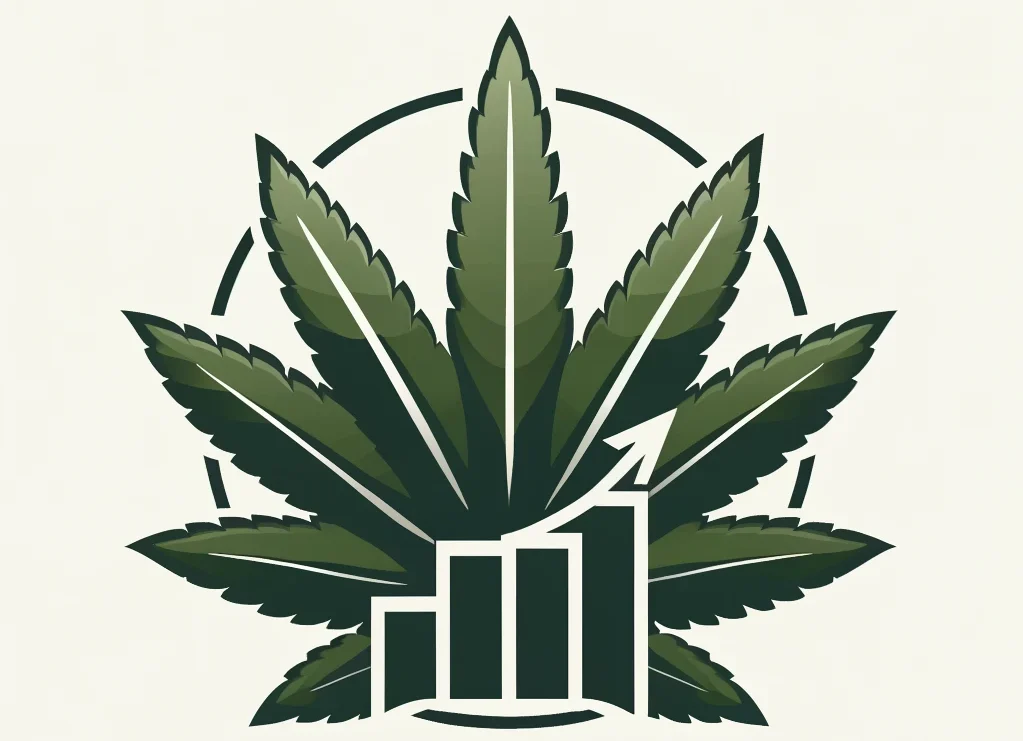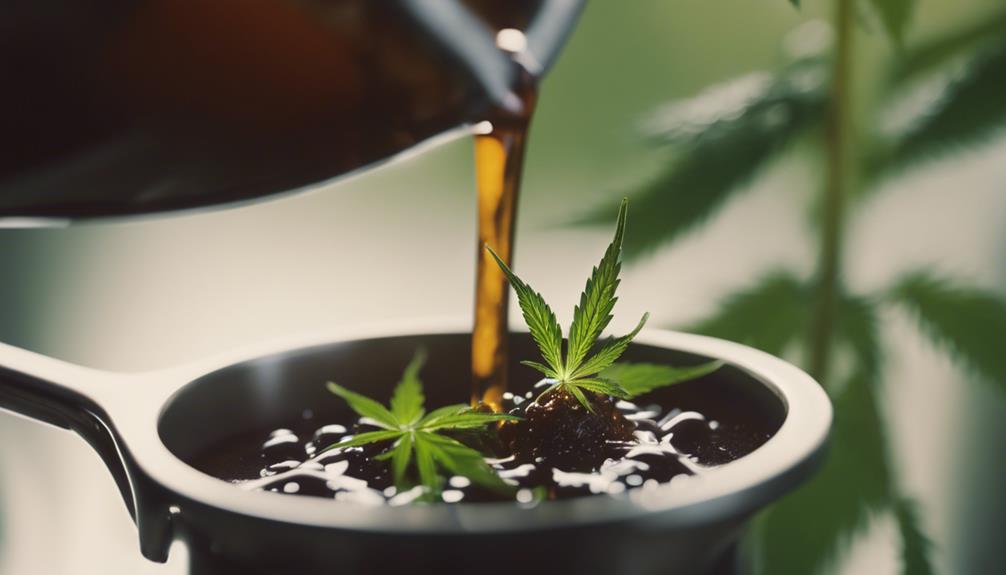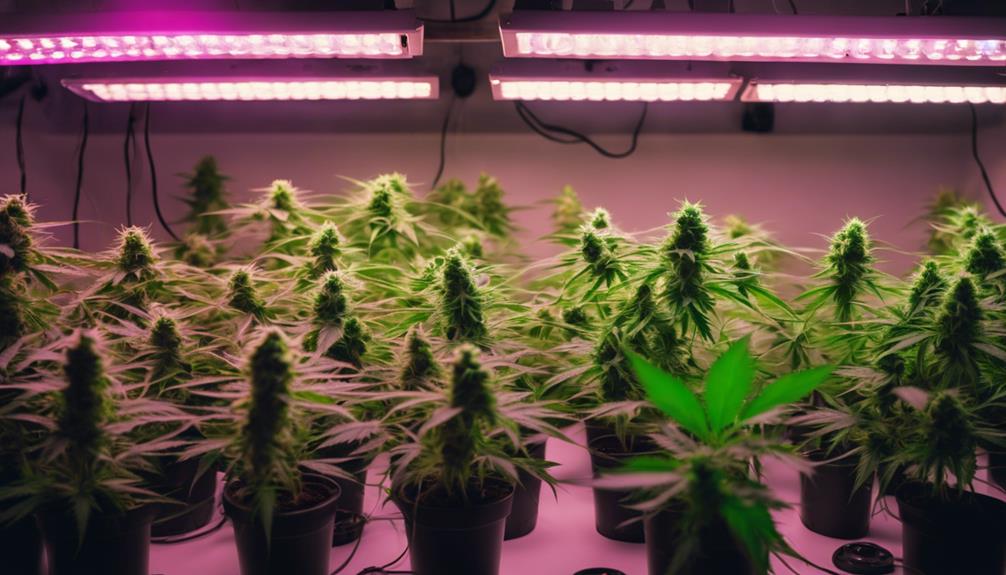To start with, flush your plants for 5-7 days before harvesting to enhance taste. Focus on trichomes for THC peak levels and check pistil color for maturity. Decide between wet/dry trim based on preference. Prepare plants by darkening for 48-72 hours to improve potency. Thin leaves for light penetration and trim carefully for better airflow. Hang dry buds evenly and cure in glass jars for enhanced flavor. To maximize yields, use low-stress training and monitor nutrient levels. These steps will help you achieve high-quality buds.
Key Takeaways
- Monitor trichomes for milky/cloudy color.
- Flush plants for 5-7 days pre-harvest.
- Trim based on preference for flavor.
- Consider a 48-72 hour dark period.
- Dry buds slowly and cure in glass jars.
Flushing Periods for Optimal Harvest
When preparing for essential harvest, it's important to understand the specific flushing periods required for cannabis autoflowers. Unlike photoperiod plants, autoflowers typically need a shorter flushing period of 5-7 days.
Flushing plays a significant role in removing excess nutrients, leading to improved taste and smoothness in the final product. Using pH-balanced water during this process is key to prevent nutrient lockout and ensure the plant absorbs nutrients efficiently.
Prior to harvest, flushing can also enhance terpene profiles, elevating the flavor of the buds. A proper flushing routine results in a cleaner burn, preventing harshness and allowing the strain's true aroma and taste to shine.
Mastering the flushing period is crucial for achieving a high-quality harvest with delightful flavors.
Determining Harvest Time With Trichomes
Inspecting trichomes is an essential step in determining the best harvest time for cannabis autoflowers, ensuring a potent and balanced end product. When the trichomes appear mostly cloudy or milky, it's usually the perfect time to harvest for a well-rounded high and maximum potency. Clear trichomes signal the plant isn't yet mature, while amber trichomes indicate overripeness, leading to a more sedative effect.
To accurately assess trichome color and maturity, I recommend using a magnifying tool like a jeweler's loupe. By closely monitoring the trichomes throughout the growing cycle of autoflowering strains, you can pinpoint the ideal moment for Harvesting Autoflowering Cannabis, guaranteeing a rewarding harvest from your buds.
Techniques for Harvesting Autoflowers
To optimize the harvest of autoflowers, implementing proper techniques is essential for maximizing quality and yield. When harvesting autoflowering plants, focus on trichome development to guarantee peak THC and potency levels. Monitor the pistil color, looking for them to turn brown and retract as signs of plant maturity, indicating the perfect harvest time. Consider flushing the plants before harvesting to enhance smoke quality by removing excess nutrients. Choose between wet trimming or dry trimming methods based on personal preference and the drying environment. These methods are vital for preserving the flavor and potency of the buds.
| Techniques for Harvesting Autoflowers | |
|---|---|
| Trichome Development | Monitor for cloudy trichomes |
| Pistil Color | Look for brown and retracting pistils |
| Flushing Process | Remove excess nutrients before harvest |
| Wet Trimming | Trim buds before drying |
| Dry Trimming | Trim buds after drying |
Importance of Low Temperatures in Harvesting
After focusing on techniques for harvesting autoflowers, understanding the importance of low temperatures in harvesting becomes evident for preserving the quality and potency of the buds. Low temperatures play a vital role in maintaining the terpenes, which are responsible for the rich aroma and flavor of the cannabis.
Additionally, cold temperatures help slow down the degradation of cannabinoids, ensuring the potency of the harvested buds remains intact. By harvesting in cool conditions, the risk of mold development during the drying process is minimized. Lower temperatures also contribute to a controlled evaporation rate, allowing for a more gradual and effective drying process.
Moreover, cooler environments help preserve the visual appeal of the buds, resulting in a high-quality final product that's visually appealing.
Dark Period Preparation for Harvest
Preparing for the dark period before harvesting autoflowering cannabis is an essential step in maximizing trichome production and terpene levels. Implementing a 48-72 hour dark period is vital to enhance resin production and elevate the potency levels of the buds. By ceasing all light exposure, the plant redirects its energy towards trichome development, ultimately improving the quality and potency of the final product.
During this dark period, the plant interprets the lack of light as a signal to protect itself, triggering increased resin production and higher potency levels. Proper preparation for the dark period is key to ensuring the potency of buds and can have a significant impact on the overall quality of the harvest, leading to more potent and flavorful autoflowering cannabis.
Defoliation and Trimming Tips
Enhancing light penetration and airflow to the buds through defoliation is an essential step in optimizing the overall quality of the harvested cannabis plants.
When defoliating and trimming autoflowering plants during the flowering stage, consider the following:
- Focus on Removing Fan Leaves: Target large fan leaves blocking light from reaching lower bud sites.
- Trim Excess Growth: Cut off unnecessary leaves, stems, and sugar leaves to tidy up the plant and direct energy to bud production.
- Avoid Trichome Damage: Be gentle during defoliation and trimming to preserve delicate trichomes for potent bud production.
Proper defoliation and trimming techniques not only enhance light penetration and airflow but also contribute to maximizing harvest yields and improving bud quality.
Partial Vs. Staggered Harvesting
When considering whether to opt for partial or staggered harvesting of cannabis plants, I must weigh the benefits and drawbacks of each method to optimize my harvest results.
Partial harvesting involves harvesting the top buds first for higher potency while allowing the lower buds to mature further, maximizing yield and managing plant stress.
On the other hand, staggered harvesting offers flexibility in timing, enabling a continuous harvest as buds reach peak ripeness individually.
Both methods require careful monitoring of trichomes to make sure the buds are harvested at the right time.
Ultimately, the decision between partial and staggered harvesting depends on personal preferences, goals, and the desired outcome for the cannabis harvest.
Proper Drying Techniques
Optimizing the drying process for autoflower buds involves utilizing hang drying to guarantee even airflow and prevent mold growth. To achieve the best results, follow these key steps:
- Maintain a dark room with cool temperatures (around 60-70°F or 15-21°C) to slow down drying and preserve terpenes.
- Make sure buds are properly trimmed to facilitate ideal drying and curing processes, ultimately enhancing overall bud quality.
- Monitor buds daily to prevent rapid drying, adjusting airflow or humidity levels as necessary for a controlled drying environment.
Once the buds are sufficiently dried, transfer them to airtight glass jars for the curing process. Remember to burp the jars daily to release excess moisture and promote flavor development.
Enhancing Buds Through Curing
To achieve the best flavor and potency in cannabis buds, mastering the art of curing is vital. Proper curing involves storing dried buds in glass jars, leaving them 75% full to allow for air circulation.
Burping the jars daily is essential to prevent mold and enhance aroma and flavor. Experimenting with different curing durations can help achieve the desired taste and effects.
Maintaining cool, dark storage conditions for cured buds is key to preserving their quality over time. Remember, curing is the final step in the harvest process and plays a significant role in maximizing the overall quality of your cannabis buds.
Strategies to Maximize Yields
Implementing important low-stress training techniques in your cannabis cultivation can greatly boost light exposure and enhance bud development for maximizing yields. To guarantee robust growth and ideal bud production, pay close attention to maintaining nutrient levels and pH balance.
Consider implementing defoliation strategies during the flowering stage to enhance airflow and light penetration, promoting healthier bud development. Additionally, it's essential to employ proper watering techniques to prevent nutrient deficiencies and support vigorous growth.
Keep a close eye on trichome development and pistil color changes to determine the ideal harvest time for maximizing yields. By incorporating these strategies into your autoflowering cannabis cultivation, you can significantly increase your harvest's overall quality and quantity.
Frequently Asked Questions
What Should Autoflower Look Like for Harvest?
When determining harvest readiness of an autoflower, observe trichome colors, pistil maturity, bud density, leaf color, aroma profile, bud size, calyx swelling, sugar leaf color, bud structure, and overall health. These factors indicate the plant's maturity for best harvest.
Should I Stop Watering My Autoflower Before Harvest?
I always stop watering my autoflower plants before harvest. It helps enhance flavor, reduce excess moisture, and aids in the drying process. This technique contributes to flavorful, potent buds. Plus, it sets the stage for a successful harvest.
How Long Should I Leave My Autoflower in the Dark Before Harvest?
I usually leave my autoflower in the dark for 24 hours before harvest. It helps the trichomes mature, and I flush nutrients to enhance flavor. Proper timing guarantees a smooth drying process with ideal humidity levels for curing aromatic buds.
Can I Harvest the Top Half of My Autoflower Plant?
I prefer harvesting the top half of my autoflower plant for staggered harvesting. Top buds mature faster, have higher cannabinoids. Monitor trichome/pistil maturity, consider plant size, effects. Staggered harvest boosts yield. Timing is essential.
Conclusion
After following these techniques for harvesting cannabis autoflowers, you can expect to achieve peak results in terms of flavor, potency, and overall quality of your buds.
By paying attention to flushing periods, trichome development, low temperatures, dark period preparation, and proper drying and curing methods, you can maximize your yields and enjoy a successful harvest.
Remember, attention to detail and patience are key when it comes to harvesting cannabis autoflowers.




